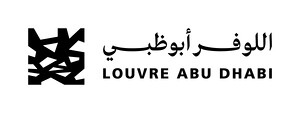November 8, 2018–February 16, 2019
Saadiyat Cultural District
Abu Dhabi
United Arab Emirates
Hours: Tuesday–Sunday 10am–6:30pm
Under the patronage of His Highness Sheikh Mohamed bin Zayed Al Nahyan, Crown Prince of Abu Dhabi, and Deputy Supreme Commander of the UAE Armed Forces, and in the presence of His Royal Highness Prince Sultan bin Salman bin Abdul Aziz Al Saud, President of the Saudi Commission for Tourism and National Heritage (SCTH), Louvre Abu Dhabi opened Roads of Arabia: Archaeological Treasures of Saudi Arabia, the second international exhibition of the museum’s cultural season. The exhibition explores the rich history of the Arabian Peninsula through archaeological and cultural artefacts, including a selection of rare pieces from the United Arab Emirates.
The exhibition explores five chapters in the history of the Arabian Peninsula, spanning early prehistoric settlements; maritime exploration; caravan trading routes that linked the region with Asia, Mesopotamia and the Mediterranean; routes of holy pilgrimage emerging in the 7th century CE; and the social and economic developments between the 14th and 16th centuries that set the stage for the modern day region.
Fourteen acclaimed editions of the show have toured throughout Europe, the USA and Asia before now coming back to the region at Louvre Abu Dhabi, where it is enriched by selected pieces from the UAE. The exhibition was conceived through cooperation between SCTH and the Musée du Louvre in Paris, where it was first presented in 2010.
“Roads of Arabia: Archaeological Treasures of Saudi Arabia forms the centrepiece of our latest cultural season at Louvre Abu Dhabi. The exhibition embodies a significant friendship and convergence between the UAE, Saudi Arabia and France. With the museum located at one of Abu Dhabi’s gateways to the Arabian Peninsula, I can’t think of a more appropriate exhibition to present on the occasion of this institution’s first anniversary.” said H.E. Mohamed Khalifa Al Mubarak, Chairman of the Department of Culture and Tourism – Abu Dhabi.
The expanded exhibition to be displayed at Louvre Abu Dhabi is co-curated by Jamal S. Omar, Vice President of Antiquities and Museums Department at STCH, Dr. Souraya Noujaim, Scientific, Curatorial and Collection Management Director at Louvre Abu Dhabi, and Noëmi Daucé, Chief Curator for Archaeology at Louvre Abu Dhabi.
Manuel Rabaté, Director of Louvre Abu Dhabi, said: “Over the past year, Louvre Abu Dhabi has been telling the world’s universal story through its international exhibitions and innovative programming. Louvre Abu Dhabi’s ambition is to celebrate cross-cultural connections and highlight bridges between civilisations. We launch the exhibition’s programme in our anniversary week with On the Roads of Arabia, a world first showcasing more than 80 talented musicians and their respective cultures from across the ancient trade routes of Arabia.”
Dr. Noujaim added: “Louvre Abu Dhabi’s international exhibitions are always an extension of the artworks and stories we present in our permanent galleries. As part of our season, Worlds of Exchanges, our latest exhibition Roads of Arabia tells the story of this region and offers a closer look at its interconnected history and heritage, across roads weaved throughout the peninsula.
The important archaeological pieces from the UAE include a pearl found in Umm Al Quwain dating from 5500-5300 BCE (loaned by Umm Al Quwain Museum); a stone decorated with a wild camel from the late 3rd millennium BCE (loaned by Al Ain Museum), and objects from Julfar (loaned by the National Museum of Ras Al Khaimah).
These will be displayed alongside significant artefacts from the Kingdom of Saudi Arabia, including outstanding funerary Neolithic stela, a 3rd-century BCE bronze statue head (loaned by the Department of Archaeology at King Saud University); a 1st-century BCE gold funerary mask from Eastern Province (loaned by the National Museum in Riyadh), 9th-century engraved steles (loaned by King Fahad National Library); 4th-millennium BCE Anthropomorphic stele (loaned by the National Museum in Riyadh); a door of the Kaaba dating to 1355 (loaned by the National Museum in Riyadh) and a key of the Kaaba (loaned by the Department of Islamic Art at the Musée du Louvre).



